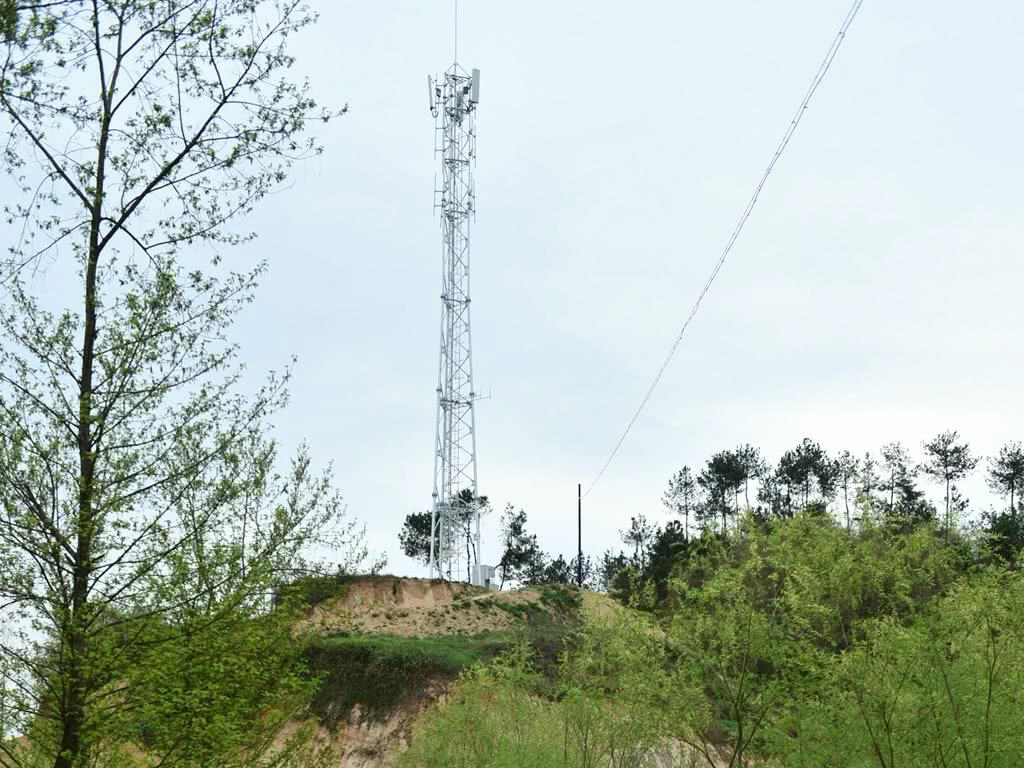Understanding the Role of BBU in Network Stability
How BBU Impacts Communication Infrastructure
Baseband Units or BBUs are basically the brains behind today's telecom networks, handling all sorts of signal processing stuff such as modulation techniques, fixing errors, and converting protocols. When these functions get centralized through BBUs, network latency drops significantly around 40% according to recent measurements, plus they help manage bandwidth better across both 4G and emerging 5G technologies. What makes BBUs really valuable is their ability to support new network designs like Cloud RAN (C-RAN) and Virtual RAN (V-RAN). These setups cut down on expenses because they separate software components from physical hardware. Looking at a study published last year about telecom infrastructure shows that BBUs actually bridge gaps between older equipment and newer systems, so cities with lots of mobile traffic don't experience those annoying network slowdowns during peak hours.
Core Functions of Baseband Units (BBU)
BBUs perform three mission-critical roles:
- Signal Processing: Converting radio frequency signals into digital data packets for transmission.
- Network Control: Managing handovers between cell sites and balancing traffic loads during peak usage.
- Multi-Mode Support: Operating across 3G, 4G, and 5G frequencies on a unified platform, which simplifies upgrades for telecom providers.
Advanced BBUs now incorporate AI-driven algorithms to predict congestion patterns, automatically rerouting traffic to maintain Quality of Service (QoS).
Case Study: Network Outage Caused by BBU Malfunction
During a big football game last fall, a local telecom company faced a massive outage lasting nearly 14 hours because their BBU couldn't handle the 5G uplink traffic properly. What started as one failure quickly spread to 12 different cell towers throughout the area. Around 230 thousand customers lost connectivity completely, including many who needed access to emergency services during the crisis. Looking back at what happened, engineers found out that poor cooling conditions had slowly damaged the BBU's processor chips by almost 27% over an 18 month period. Regular temperature checks would have caught this problem long before it became catastrophic. The whole mess shows just how critical regular maintenance really is for BBUs if we want our networks to stay stable under pressure.
Preventive Maintenance Best Practices for BBU Longevity
Baseband Units (BBUs) require systematic care to maintain network resilience, with proper maintenance reducing unexpected failures by 42% in tower-mounted configurations (Telecom Hardware Journal, 2023). These protocols balance technical rigor with operational practicality across distributed telecom infrastructures.
Regular Maintenance Routines to Extend BBU Lifespan
Critical quarterly tasks include:
- Compressed-air cleaning of ventilation systems to prevent dust-induced overheating
- Firmware validation against vendor security patches
- Load testing backup batteries at 85% capacity thresholds
Operators adhering to these routines report 31% fewer emergency repair dispatches compared to reactive maintenance models.
Best Practices for Inspection and Servicing of BBUs
Advanced inspection techniques combine thermal imaging with signal integrity tests:
- Replace capacitors showing >10% capacitance loss during impedance tests
- Validate fiber optic connections using light meters set to -15 dBm thresholds
- Document PCB discoloration patterns indicating early-stage component stress
Standardized checklists reduce technician oversights by 29% in multi-vendor BBU environments.
Scheduling Preventative Maintenance Across Telecom Sites
Centralized scheduling systems optimize technician deployments using three key parameters:
| Priority Factor | Implementation Strategy |
|---|---|
| Traffic seasonality | Pre-summer checks in tourist zones |
| Hardware age | Priority for units exceeding 3-year lifespans |
| Environmental risks | Monthly coastal site corrosion inspections |
Automated tools adjust schedules when real-time network health data shows error rates exceeding 0.1%.
Balancing Corrective and Preventive Maintenance Strategies
Allocate resources using a 70/30 split:
- 70% to scheduled inspections and predictive analytics
- 30% reserved for urgent repairs in mission-critical sectors
This model lowers total cost of ownership by 19% compared to purely reactive approaches while maintaining 99.4% network availability during peak loads.
Remote Monitoring and Predictive Maintenance for BBUs
Leveraging Remote Monitoring for Early Issue Detection
Monitoring systems that run continuously cut down on Baseband Unit (BBU) failures by around 34%, according to the 2024 Telecom Infrastructure Report. These systems analyze things like voltage changes and temperature patterns in real time. The cloud-based platforms give network operators a way to spot problems early on when something goes wrong with power consumption or signals start acting strange. Take coolant leaks as one case study from field operations last year. Remote diagnostic tools caught these issues in about 12 percent of all BBUs checked during maintenance work in 2023. Finding these leaks ahead of time stopped bigger system failures from happening downstream.
AI Driven Alerts for Predictive BBU Anomaly Detection
Machine learning models trained on historical performance data can predict component degradation with 89% accuracy. These systems analyze:
- Signal-to-noise ratio trends
- Processor load patterns during peak traffic
- Voltage regulator response times
A major telecom provider reported 40% fewer unplanned outages after implementing neural networks that flag subtle firmware conflicts missed by manual checks (Global Predictive Maintenance Study 2023).
Integrating IoT Sensors with BBU Systems for Real-Time Insights
The smart temperature sensors along with humidity monitors give detailed environmental readings that are really important for baseband units located near coasts or inside factories. Pairing these devices with load balancing telemetry helps manage power distribution better when there's sudden network traffic spikes. According to recent field testing, sites using integrated IoT solutions resolved problems about three days quicker thanks to their condition monitoring alerts versus old school equipment. Industry Analysis published findings supporting this claim back in 2024.
Performance Evaluation Tools and Tracking Methods
Operators employ dashboard analytics to monitor:
- Mean Time Between Failures (MTBF) trends
- Energy efficiency metrics per data session
- Software update compatibility rates
These metrics help prioritize maintenance tasks, with standardized scoring systems reducing repair time variance by 28% across multi-vendor deployments.
Identifying Early Signs of BBU Failure to Prevent Downtime
Common Warning Signs of BBU Degradation in Networks
Spotting problems with BBU degradation usually begins when we notice small changes in how things are performing. Technicians keep an eye out for things like signals that jump around unpredictably, equipment that keeps turning itself off and on again, or systems shutting down because parts get too hot. Network issues tend to show up too, with data taking longer to process or connections dropping in and out randomly. These are pretty clear warning signs that something isn't quite right with the BBU sync. Many field workers tell stories about strange noises coming from fans running unevenly, or LEDs flashing in ways they shouldn't according to normal operation guides. Fixing these issues while they're still small problems can cut down on repair bills significantly. Some estimates suggest savings of around 35% when maintenance teams catch these warnings early before bigger system failures start happening.
Troubleshooting Recurring BBU Performance Issues
If strange performance problems keep happening, it's time to roll up our sleeves and dig deeper. First things first, check those error logs carefully to figure out if we're dealing with software bugs or actual hardware problems. According to some research from Ponemon back in 2022, around 28 percent of those pesky recurring BBU sync errors come down to firmware conflicts. Then we need to make sure the power supply is stable and the backup batteries are still doing their job properly since voltage changes can really shorten the life of BBUs. Most of the time, simply recalibrating those signal amplifiers and hitting reset on configuration settings will take care of those annoying latency jumps that pop up now and then. But when all else fails and issues stick around, don't wait until disaster strikes - swap out old capacitors and connectors while there's still time. Better safe than sorry when these parts start acting up and taking neighboring components down with them.
Data Insight: 67% of Failures Linked to Undetected Hardware Wear (Ericsson, 2023)
Looking at data from over 12,000 telecom sites in 2023 showed something pretty interesting. About two thirds of all BBU failures actually came down to hardware problems nobody had noticed before they failed completely. The main culprits? Corroded circuit boards and cooling systems that had been wearing out slowly over time. Now here's where things get interesting: sites that did quarterly infrared checks caught around 89% of those potential problems while doing regular maintenance work. That means fewer unexpected service interruptions for customers. What this tells us is that mixing smart analytics with good old fashioned hands-on checking works best because even our fancy AI tools sometimes miss those slow moving physical issues. And if technicians have standardized checklists looking specifically for swollen capacitors or discolored resistors, they catch even more of these hidden trouble spots before they become major headaches.
Standardizing and Automating BBU Maintenance for Efficiency
Benefits of Standardization in BBU Maintenance Processes
When it comes to BBU maintenance, sticking to standardized workflows makes a real difference. Industry data shows these methods cut down on configuration mistakes by around 35% and speed up repairs by roughly 22%. The trick is having everyone follow the same playbook. Think about things like detailed inspection lists that nobody skips over, plus clear rules for when something goes wrong. This consistency helps prevent those pesky problems from slipping through the cracks. Look at networks that document their calibration processes properly versus ones that wing it. The former experience about 40% fewer unexpected shutdowns. Makes sense really - knowing exactly what needs doing when saves time and headaches down the road.
| Metric | Standardized Process | Non-Standardized Process | Improvement |
|---|---|---|---|
| Downtime incidents/year | 1.8 | 3.2 | 44% reduction |
| MTTR (Mean Time to Repair) | 55 minutes | 85 minutes | 35% faster |
Implementing Uniform Protocols for Communication Hardware
Getting protocols right begins when companies convert maintenance instructions into digital formats that everyone on different cell sites can access easily. Technicians working across various locations need clear steps to follow whether they're updating firmware or swapping out parts. Many top service providers now combine their standard operating procedures with interactive training games. These approaches actually work pretty well in practice, boosting compliance numbers around 28% according to recent field reports from several operators. The whole system needs constant checking too since 5G keeps changing so fast. Power management remains a big concern especially for those bulky baseband units that consume tons of electricity day after day.
Manual Inspections vs. Automated Diagnostics: Resolving the Industry Paradox
AI systems track BBU performance data as it happens, but hands-on checks are still needed to spot actual wear and tear problems such as swollen capacitors or corroded connectors. When companies mix regular quarterly inspections with ongoing computer monitoring, they cut down on wrong alarms by around 30% and save nearly 20% on parts replacements. Finding this middle ground works well because many facilities still run older equipment alongside newer tech. The combination approach actually saves businesses about eighteen thousand dollars at each location after just three years, according to field reports from maintenance teams across different sectors.
FAQ Section
What is a Baseband Unit (BBU)?
A Baseband Unit (BBU) is a key component of telecom networks responsible for signal processing, network control, and supporting various modes like 3G, 4G, and 5G.
How does BBU contribute to network stability?
BBUs enhance network stability by reducing latency, managing bandwidth, supporting advanced network designs like C-RAN and V-RAN, and bridging equipment gaps to prevent slowdowns.
What are the common issues associated with BBU?
Common issues include signal fluctuations, equipment overheating, recurring sync errors, and hardware wear like corroded circuit boards, often leading to network disruptions.
Why is preventive maintenance important for BBUs?
Preventive maintenance is crucial for BBUs to avoid unexpected failures, ensure consistent network service, and catch potential problems early, reducing repair costs and downtime.










